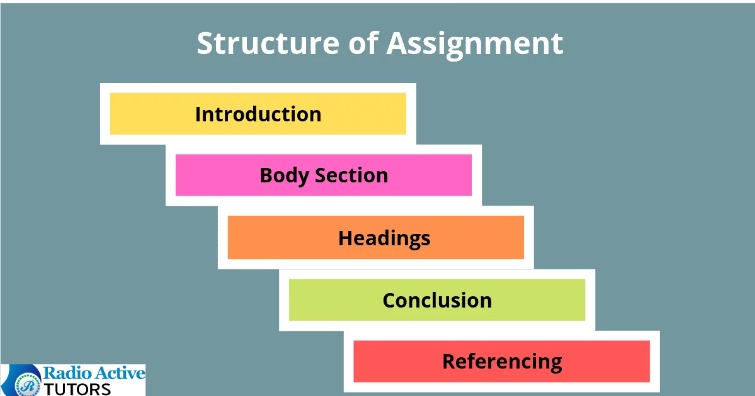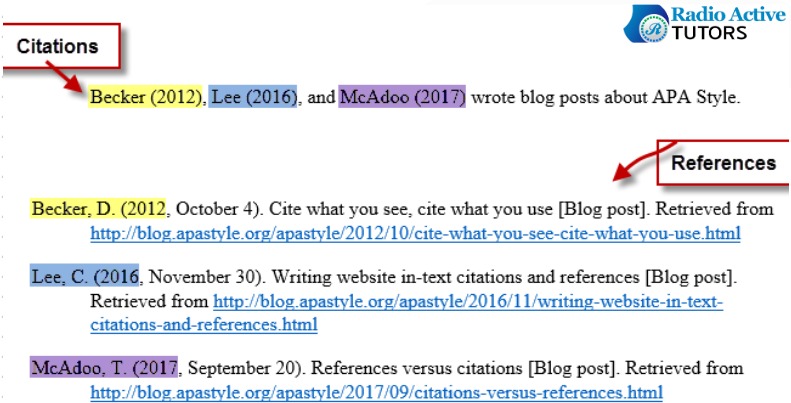New Order Found Please Review the order ASAP for the client to
proceed

Unread Message Found Please check the message ASAP and reply to client


I. Introduction
II. Understanding Assignment Requirements
III. Research and Resource Gathering
IV. Developing a Strong Thesis Statement in Environmental Science Assignments
V. Structuring Your Environmental Science Assignment
VI. Citation and Referencing
VII. Editing and Proofreading
VIII. Applications of Environmental Science Assignments
IX. Concluding Environmental Science Assignments
A. Importance of Environmental Science Assignments
Environmental Science assignments play a crucial role in fostering a deeper understanding of our planet's intricate ecosystems and the challenges they face. These assignments serve as a bridge between theory and practical application, compelling students to delve into real-world environmental issues. By grappling with topics such as climate change, biodiversity loss, and pollution, students not only enhance their knowledge but also develop critical thinking and problem-solving skills.
The importance of these assignments extends beyond the classroom, encouraging students to become informed and responsible global citizens. Through research, analysis, and articulation of solutions, Environmental Science assignments contribute significantly to shaping a generation that is attuned to the complexities of our environment and equipped to address the pressing ecological concerns of our time.
B. Overview of Environmental Science as a Discipline
Environmental Science assignments provide a comprehensive overview of the multidisciplinary field of Environmental Science. This discipline amalgamates principles from biology, chemistry, physics, geology, and sociology to understand the intricate relationships between living organisms and their environment.
Through assignments, students explore topics like ecosystems, biodiversity, environmental conservation, and the impact of human activities on the planet. The assignments serve as a journey into the heart of environmental issues, offering a holistic understanding of how various elements interact within our biosphere. By delving into this broad and interconnected field, students not only gain knowledge but also develop a profound appreciation for the complexity of environmental systems and the urgency of sustainable practices.
C. Purpose of the Guide
The purpose of this guide on Environmental Science assignments is to serve as a compass for students navigating the vast and dynamic landscape of environmental studies. It aims to provide clarity on the intricacies of assignments within this discipline, offering insights into research methodologies, writing techniques, and the incorporation of critical elements.
By acting as a comprehensive resource, this guide seeks to empower students to tackle environmental science assignments with confidence, ensuring they grasp the significance of the topics and can effectively communicate their findings. Beyond academic success, the guide aspires to instill a passion for environmental stewardship, encouraging students to approach their assignments not merely as academic exercises but as opportunities to contribute meaningfully to the understanding and preservation of our planet's ecosystems.

A. Analyzing Assignment Prompts
Understanding Environmental Science assignments begins with a meticulous analysis of assignment prompts. This initial step is critical in deciphering the specific requirements and expectations set forth by the instructor. It involves a careful examination of key terms, directives, and the overall scope of the task. Identifying and understanding these elements is essential for crafting a targeted and relevant response.
Whether the prompt calls for a research paper, case study, or lab report, a thorough analysis ensures that students align their efforts with the intended goals of the assignment. By breaking down the prompt into its constituent parts, students can better grasp the nuances of the task at hand, setting the stage for a well-informed and precisely executed Environmental Science assignment.
1. Identifying Key Terms
Understanding Environmental Science assignments hinges on the precise identification of key terms embedded within the assignment prompts. Key terms serve as signposts, guiding students toward the specific focus and requirements of the task. It is imperative to decipher and define these terms comprehensively, as they shape the parameters and expectations of the assignment.
For instance, terms like "biodiversity," "ecosystem dynamics," or "environmental impact assessment" carry distinct meanings and necessitate a nuanced approach. By recognizing and grasping these terms, students can tailor their research, analysis, and articulation to address the core concepts outlined in the assignment. Effectively identifying key terms is not just a linguistic exercise but a strategic step in ensuring that the resultant Environmental Science assignment accurately reflects the depth and breadth of the intended subject matter.
2. Grasping Assignment Objectives
Grasping the objectives of Environmental Science assignments is fundamental to producing a focused and purposeful piece of work. Beyond simply deciphering the task at hand, understanding the assignment objectives involves recognizing the broader goals set by instructors. This entails discerning whether the assignment aims to assess analytical skills, promote critical thinking, or evaluate the application of theoretical concepts to real-world scenarios.
By comprehending these objectives, students can tailor their approach to meet specific criteria, ensuring their responses align with the overarching goals of the assignment. This deeper understanding not only enhances the quality of the work but also enables students to engage more meaningfully with the subject matter, fostering a holistic and insightful exploration of environmental science concepts.
B. Different Types of Environmental Science Assignments
Understanding Environmental Science assignments involves recognizing the diverse array of assignment types within this discipline. Students may encounter various formats such as research papers, case studies, and lab reports, each demanding a unique set of skills and approaches. Research papers require in-depth exploration and analysis of a particular environmental issue, while case studies demand a detailed examination of specific scenarios. Lab reports often involve hands-on experimentation and data analysis.
Recognizing the distinctions among these assignment types is crucial for tailoring research methodologies, writing styles, and presentation formats accordingly. By grasping the nuances of each assignment type, students can effectively navigate the varied landscapes of Environmental Science studies, demonstrating versatility and adeptness in addressing the specific requirements of different tasks.

A. Effective Literature Review Techniques
Effective literature review techniques are pivotal in the research and resource gathering phase of Environmental Science assignments. Conducting a thorough literature review involves systematically exploring existing scholarly works relevant to the chosen topic. Students should employ key strategies, such as utilizing online databases, academic journals, and reputable environmental science publications.
Boolean search operators can help refine and target searches, ensuring access to the most pertinent sources. Additionally, citation chaining—examining the references of relevant articles—provides a pathway to additional valuable materials. Synthesizing information from diverse sources is crucial for constructing a comprehensive understanding of the subject matter. By employing effective literature review techniques, students lay the foundation for well-informed and evidence-based Environmental Science assignments, enriching their analyses and contributing to the academic discourse within the field.
1. Online Databases and Journals
In the realm of Environmental Science assignments, tapping into online databases and journals is a paramount strategy for research and resource gathering. Online databases like PubMed, JSTOR, and ScienceDirect offer a vast repository of peer-reviewed articles, research papers, and publications related to diverse environmental topics.
These platforms provide students with immediate access to the latest research findings and scholarly insights. Utilizing advanced search functionalities within these databases allows for precise exploration, ensuring that the gathered resources align closely with the specific focus of the assignment.
Navigating through reputable environmental science journals not only enriches the depth of research but also ensures the reliability and credibility of the sourced information. Online databases and journals thus serve as indispensable tools, empowering students to stay abreast of the evolving landscape of environmental science and craft assignments rooted in the latest academic discourse.
2. Credible Environmental Science Sources
When engaging in research and resource gathering for Environmental Science assignments, prioritizing credible sources is paramount. Credibility ensures the accuracy and reliability of the information used in assignments. Trusted sources in environmental science include peer-reviewed journals, reputable academic publishers, government agencies, and well-established environmental organizations.
These sources provide a solid foundation for building evidence-based arguments and analyses. It is essential to critically evaluate sources for their authority, objectivity, currency, relevance, and accuracy. By relying on credible environmental science sources, students not only enhance the academic rigor of their assignments but also contribute to the integrity of the field by upholding high standards of research and knowledge dissemination.
B. Utilizing Primary and Secondary Sources
In the research and resource gathering phase of Environmental Science assignments, employing a combination of primary and secondary sources enriches the depth and authenticity of the information. Primary sources involve firsthand data, such as original research studies, interviews, or field observations. These sources provide direct insight into environmental phenomena.
Secondary sources, on the other hand, encompass analyses, reviews, or interpretations of primary research conducted by others. Utilizing both types of sources creates a well-rounded perspective, allowing students to corroborate findings, validate information, and offer a comprehensive understanding of the chosen environmental topic. Striking a balance between primary and secondary sources not only strengthens the academic rigor of the assignment but also demonstrates a holistic approach to research, ensuring a nuanced exploration of the complexities within environmental science.
1. Interviews and Surveys
In the realm of Environmental Science assignments, interviews and surveys serve as valuable tools for gathering firsthand information and insights. Conducting interviews with experts, researchers, or individuals with direct experience in the chosen environmental topic can provide unique perspectives and real-world context. Structured surveys, distributed to relevant stakeholders or the public, offer quantitative data that can complement qualitative findings.
These methods not only enhance the depth of research but also add a human dimension to environmental studies, capturing perspectives that may not be readily available in existing literature. When executed thoughtfully, interviews and surveys contribute to a more comprehensive understanding of environmental issues, enriching the content and analysis of assignments and fostering a connection between academic research and practical, lived experiences.
2. Scholarly Articles and Books
Delving into scholarly articles and books is a foundational strategy in the research and resource gathering phase of Environmental Science assignments. Scholarly articles, published in peer-reviewed journals, offer in-depth analyses, research findings, and discussions on specific environmental topics. These articles are often authored by experts in the field, providing a reliable source of information.
Books, especially those written by renowned environmental scientists, offer comprehensive insights and synthesized knowledge on broader environmental issues. Utilizing both scholarly articles and books allows students to explore the breadth and depth of their chosen subject, gaining a nuanced understanding backed by rigorous research and academic expertise. By drawing from these authoritative sources, students can elevate the quality and credibility of their assignments, contributing to a robust and well-informed discourse within the field of Environmental Science.
.jpeg)
A. Crafting a Clear and Concise Thesis
Crafting a clear and concise thesis statement is a critical step in the development of strong Environmental Science assignments. The thesis serves as the guiding beacon, succinctly articulating the main argument or purpose of the assignment. In the realm of environmental science, where topics can be complex and multifaceted, a well-crafted thesis statement not only communicates the focus of the assignment but also sets the tone for the reader.
It should encapsulate the core issue being addressed, the stance taken, and the significance of the research. By ensuring clarity and conciseness, students not only provide a roadmap for their own writing process but also offer readers a precise understanding of the assignment's objectives, fostering engagement and comprehension from the outset.
B. Incorporating Environmental Issues into the Thesis
In the realm of Environmental Science assignments, the strength of a thesis statement lies not just in its clarity but also in its ability to incorporate the specific environmental issues at the heart of the research. A robust thesis should not merely outline the general topic but should delve into the particular environmental challenges or questions under examination.
Whether addressing climate change, biodiversity loss, or pollution, the thesis statement serves as a beacon that signals the assignment's commitment to addressing real-world environmental concerns. By directly tying the thesis to these issues, students establish the relevance and urgency of their research, showcasing a commitment to exploring solutions and contributing meaningfully to the ongoing discourse on environmental science.
C. Aligning Thesis with Assignment Objectives
In the development of Environmental Science assignments, the strength of a thesis statement is contingent upon its alignment with the overarching objectives of the assignment. Crafting a thesis that directly correlates with the assignment's goals ensures a focused and purposeful exploration of the chosen topic. Whether the objective is to analyze, propose solutions, or conduct a comparative study, the thesis serves as the central narrative thread that ties the entire assignment together.
By aligning the thesis with the assignment objectives, students set a clear trajectory for their research and communicate to readers the specific aims they intend to achieve. This strategic coherence not only enhances the overall quality of the assignment but also underscores the intentionality and precision with which the research is undertaken in the realm of environmental science.

A. Introduction Section
The introduction section of Environmental Science assignments is a crucial gateway that sets the stage for the entire exploration. It serves the dual purpose of capturing the reader's attention and providing a concise overview of the assignment's focus. An effective introduction begins with a compelling hook, drawing the reader into the environmental issue under scrutiny. It should then transition seamlessly to present the thesis statement, succinctly outlining the main argument or purpose of the assignment.
Additionally, the introduction provides contextual background, helping readers understand the significance of the chosen environmental topic. By crafting a well-structured introduction, students lay a solid foundation for the reader's engagement and comprehension, inviting them to delve into the complexities of environmental science with a clear understanding of the assignment's objectives.
1. Hooking the Reader with a Relevant Fact
The art of structuring Environmental Science assignments begins with a compelling hook, and nothing captivates a reader more than a relevant and intriguing fact. Whether it's a startling statistic on deforestation rates, a thought-provoking insight into the impact of climate change, or a surprising revelation about endangered species, a well-chosen fact immediately grabs the reader's attention.
This approach not only establishes the immediate relevance of the environmental issue at hand but also instills a sense of urgency, encouraging readers to delve further into the assignment. By leading with a captivating fact, students create a powerful introduction that not only informs but also resonates with the audience, setting the tone for a thoughtful exploration of environmental science.
2. Stating the Thesis Clearly
In structuring Environmental Science assignments, a paramount element is the clear articulation of the thesis statement. Following the captivating introduction, the thesis statement should be stated with precision and clarity. It serves as the guiding beacon for the entire assignment, communicating the main argument or purpose succinctly.
A well-crafted thesis in this context should not leave room for ambiguity; rather, it should convey the specific environmental issue under scrutiny and the stance taken by the writer. This clarity not only ensures that the reader understands the primary focus of the assignment but also provides a roadmap for the subsequent analysis and exploration. By stating the thesis clearly, students establish a foundation for a cohesive and purposeful narrative that aligns seamlessly with the broader objectives of the environmental science assignment.
B. Main Body
The main body of Environmental Science assignments is the substantive core where detailed analysis, exploration, and discussion unfold. This section is typically organized into distinct paragraphs, each addressing specific aspects related to the chosen environmental topic. It begins with a logical and clear organization of ideas, ensuring a smooth flow that guides the reader through the complexities of the subject matter.
In this section, students delve into the heart of their research, presenting evidence, data, and scholarly insights to support their thesis. Each paragraph should contribute cohesively to the overarching narrative, providing a comprehensive understanding of the environmental issues at hand. Utilizing subheadings can aid in structuring the main body, making it easier for the reader to navigate through different aspects of the assignment. Whether analyzing causes, effects, or proposing solutions, the main body is the canvas where students demonstrate their depth of knowledge and critical thinking skills within the realm of environmental science.
1. Organizing Ideas Logically
In the process of structuring Environmental Science assignments, organizing ideas logically within the main body is paramount for clarity and coherence. Logical organization ensures that the progression of ideas flows seamlessly, allowing readers to follow the argument or analysis with ease. Begin by outlining a clear structure, grouping related ideas together and establishing a logical sequence for their presentation.
This could involve organizing content chronologically, categorically, or in order of significance. Transition sentences between paragraphs help maintain a smooth flow, guiding the reader from one idea to the next. By organizing ideas logically, students create a cohesive narrative that not only enhances the overall readability of the assignment but also facilitates a nuanced understanding of the complex environmental concepts under examination.
2. Providing In-Depth Analysis of Environmental Concepts

Within the main body of Environmental Science assignments, a critical aspect is the provision of in-depth analysis of environmental concepts. This involves going beyond surface-level descriptions to explore the intricacies of the chosen environmental issues. Students should dissect and examine key concepts, theories, or phenomena related to the topic, offering thorough explanations and insights.
Utilizing data, research findings, and scholarly perspectives, the analysis should unveil the complexities of the environmental concepts under scrutiny. This section is an opportunity for students to showcase their understanding, critical thinking skills, and the ability to contextualize information within the broader field of environmental science. By providing an in-depth analysis, students not only meet the expectations of academic rigor but also contribute meaningfully to the comprehension and discussion of the environmental challenges addressed in the assignment.
C. Conclusion
The conclusion of Environmental Science assignments serves as the culmination of the exploration, providing a synthesis of key findings and insights. This section should revisit the thesis statement, summarizing the main argument or purpose of the assignment. However, it goes beyond mere repetition by offering a fresh perspective or reiterating the significance of the research in the context of broader environmental science discourse.
The conclusion is an opportunity to reflect on the implications of the findings, propose potential avenues for future research, or advocate for specific actions in response to the environmental issues discussed. It should leave a lasting impression on the reader, emphasizing the importance of the assignment's objectives and the relevance of the explored environmental concepts. By crafting a thoughtful conclusion, students solidify the impact of their work, leaving the reader with a sense of closure and a deeper understanding of the complexities within environmental science.
1. Summarizing Key Points
Summarizing key points is a crucial element in structuring the conclusion of Environmental Science assignments. This involves distilling the essential findings, insights, and arguments presented throughout the assignment into a concise and focused summary.
Each major point, whether related to environmental issues, research methodologies, or proposed solutions, should be revisited and succinctly restated. The goal is to provide readers with a quick overview of the assignment's main contributions and takeaways. This summary not only reinforces the central themes but also reinforces the clarity and coherence of the assignment. By summarizing key points effectively, students ensure that the reader leaves with a solid understanding of the core aspects explored in the assignment, reinforcing the overall impact and significance of their work in the realm of environmental science.
2. Reinforcing the Thesis
Reinforcing the thesis is a pivotal aspect of structuring the conclusion in Environmental Science assignments. This involves revisiting and reiterating the central argument or purpose stated in the thesis statement. The conclusion serves as an opportunity to emphasize how the evidence, analysis, and discussions presented throughout the assignment support and strengthen the initial thesis.
By connecting each key point back to the thesis, students underscore the coherence and relevance of their research. This reinforcement provides a sense of closure, leaving a lasting impression on the reader regarding the assignment's main focus. Effectively tying together the conclusion with the thesis statement ensures that the reader departs with a clear understanding of the assignment's objectives and the significance of the explored environmental concepts within the broader field of environmental science.

A. Proper Use of APA, MLA, or Other Citation Styles
In Environmental Science assignments, the proper use of citation styles, such as APA (American Psychological Association), MLA (Modern Language Association), or other specified formats, is essential for academic integrity and clarity. Whether referencing scholarly articles, books, or other sources, adherence to a consistent citation style ensures that readers can easily locate the referenced material.
Each citation style has specific guidelines for citing different types of sources, including in-text citations and the formatting of a bibliography or reference page. Students must familiarize themselves with the rules of their chosen citation style and apply them consistently throughout the assignment. This not only acknowledges the contributions of other researchers but also enhances the credibility of the assignment by demonstrating a commitment to rigorous academic standards in the field of environmental science.
B. Creating a Reference Page
Creating a reference page is an integral part of the citation and referencing process in Environmental Science assignments. This page serves as a comprehensive list of all the sources cited within the assignment, providing readers with the necessary information to locate each reference. The reference page should be organized alphabetically according to the author's last name or the title of the source if no author is specified.
Each entry should include essential details such as the author's name, publication date, title of the work, and publication information. Adhering to the specific formatting guidelines of the chosen citation style (such as APA, MLA, etc.) is crucial for consistency and clarity. A well-constructed reference page not only demonstrates the academic rigor of the assignment but also facilitates transparency and integrity in acknowledging the sources that have contributed to the research within the field of environmental science.
C. Avoiding Plagiarism: Tips and Tools
Avoiding plagiarism is paramount in Environmental Science assignments, and employing tips and tools can help students maintain academic integrity. Firstly, it is crucial to understand what constitutes plagiarism—using someone else's ideas, words, or work without proper acknowledgment. To prevent unintentional plagiarism, always cite sources for direct quotes, paraphrased content, and even ideas that are not common knowledge.
Utilize citation styles, such as APA or MLA, consistently throughout the assignment. Additionally, online plagiarism detection tools like Turnitin or Grammarly can be valuable resources to check for unintentional plagiarism and ensure the originality of the work. Developing good research habits, taking meticulous notes, and keeping track of sources from the beginning of the research process can also contribute to avoiding plagiarism in environmental science assignments. By upholding ethical writing practices, students not only demonstrate academic integrity but also contribute to the credibility of their work in the field.

A. The Role of Editing in Assignment Excellence
The role of editing in achieving excellence in Environmental Science assignments cannot be overstated. Editing is not just a process of correcting grammar and spelling errors; it is a critical step that refines and polishes the entire assignment. During the editing phase, students can scrutinize the clarity and coherence of their arguments, ensuring that ideas flow logically and the thesis statement is effectively communicated.
It provides an opportunity to assess the overall structure, eliminate redundancies, and enhance the precision of language. Attention to detail in editing is essential for maintaining the highest standards of academic writing. A well-edited environmental science assignment not only elevates the quality of the work but also communicates the author's commitment to presenting their research with accuracy and professionalism, contributing to the overall excellence of the assignment.
B. Common Environmental Science Writing Mistakes
In the realm of Environmental Science assignments, the editing and proofreading phase is crucial for identifying and rectifying common writing mistakes. These may include inaccuracies in scientific terminology, syntax errors, or inconsistencies in formatting and citation styles. Students often encounter challenges in maintaining a balance between scientific rigor and clarity in their writing.
The editing process provides an opportunity to address these issues, ensuring that the language is precise, the content is coherent, and the assignment adheres to the specified guidelines. By diligently proofreading, students can elevate the overall quality of their environmental science assignments, presenting their research in a manner that is not only academically sound but also effectively communicates complex scientific concepts to a broader audience.
1. Misuse of Terminology
The editing and proofreading phase is pivotal in Environmental Science assignments, particularly for rectifying the misuse of terminology. In the complex landscape of environmental science, precision in language is paramount. Misusing scientific terms can lead to misinterpretation and compromise the accuracy of the assignment.
During the editing process, students must meticulously review their use of terminology, ensuring that each term is employed in its correct context and with accurate meaning. This attention to detail not only upholds the standards of scientific communication but also strengthens the credibility of the assignment. By eradicating terminology errors, students enhance the precision of their language, contributing to a more accurate and effective conveyance of their research within the field of environmental science.
2. Grammatical and Syntax Errors
Editing and proofreading play a vital role in refining Environmental Science assignments by addressing grammatical and syntax errors. In the intricate realm of scientific writing, clarity and precision are paramount, and errors in grammar and syntax can obscure the intended meaning. During the proofreading process, students should scrutinize sentence structures, ensuring they are grammatically correct and convey information accurately.
Attention to syntax ensures that ideas are expressed logically and coherently. Correcting these errors not only enhances the overall readability of the assignment but also upholds the standards of academic writing within the field of environmental science. By meticulously addressing grammatical and syntax issues, students ensure that their research is communicated with the utmost clarity and professionalism.

A. Connecting Classroom Learning to Practical Scenarios
Applications of Environmental Science assignments extend beyond the classroom, serving as a bridge between theoretical knowledge and real-world scenarios. These assignments provide a practical avenue for students to apply the concepts learned in the classroom to tangible environmental issues. By tackling assignments that address current challenges such as climate change, pollution, or biodiversity loss, students gain valuable insights into the practical implications of their academic studies.
This connection between theory and practice not only reinforces classroom learning but also cultivates a deeper understanding of the complexities within the field of environmental science. Moreover, it empowers students to contribute meaningfully to the resolution of pressing environmental challenges, fostering a sense of responsibility and engagement in the broader environmental discourse.
B. Case Studies of Successful Environmental Science Assignments
Case studies of successful Environmental Science assignments highlight the tangible impact of translating classroom learning into practical applications. These assignments go beyond theoretical understanding, showcasing how students can leverage their knowledge to address real-world environmental challenges.
Successful cases often involve thorough research, innovative problem-solving, and a deep commitment to sustainable practices. Whether proposing solutions to local pollution issues, conducting impactful field studies, or contributing to community awareness, these assignments exemplify the transformative power of applying environmental science principles. By examining and replicating these successes, students can draw inspiration and learn valuable lessons about the potential of their academic endeavors to make a positive difference in the broader environmental landscape.

A. Recapitulating the Guide's Key Points
Concluding Environmental Science assignments involves a strategic recapitulation of the guide's key points, ensuring a cohesive and impactful closure to the exploration. Begin by revisiting the thesis statement, emphasizing its significance in addressing the chosen environmental issue. Summarize the main findings and insights obtained during the research process, highlighting key concepts and their implications. Reinforce the connection between the assignment's objectives and the broader field of environmental science.
Emphasize the practical applications of the research, linking classroom learning to real-world scenarios. Finally, encourage reflection on the transformative potential of environmental science assignments in fostering understanding, contributing to solutions, and cultivating a sense of environmental stewardship. By effectively recapitulating these key points, students create a conclusion that not only reinforces the assignment's main themes but also leaves a lasting impression on the reader, underscoring the importance of their work in the dynamic landscape of environmental science.
B. Encouragement for Future Environmental Science Writers
In concluding Environmental Science assignments, it's essential to extend encouragement to future environmental science writers. Acknowledge the significance of their role in addressing the intricate challenges our planet faces. Emphasize the transformative potential of their contributions, whether through research, analysis, or proposing solutions.
Inspire a sense of responsibility and passion for environmental stewardship. Encourage ongoing curiosity and a commitment to staying informed about the evolving field. Remind future writers that their voices and insights are crucial in shaping the trajectory of environmental science. By fostering a spirit of engagement and advocacy, we empower the next generation to continue the vital work of understanding and safeguarding our environment for a sustainable future.

Hard Binding Dissertation ( 4 Key Features)
4 month(s) ago
Psychology dissertation topics (5 Major Areas)
4 month(s) ago
Dissertation editor (5 Key Services)
4 month(s) ago
Dissertation Coaching (7 Main Benefits)
4 month(s) ago
Dissertation Acknowledgement Format ( 6 Key Tips)
4 month(s) ago
Psychology Dissertation Topics ( 7 Main Ideas)
4 month(s) ago
Dissertation Binding ( Key Tips)
4 month(s) ago
Dissertation editing services (8 Key Areas)
4 month(s) ago
Dissertation template (Student's Guide)
4 month(s) ago
How to come up with a dissertation topic (9 Key Steps)
4 month(s) ago
Radio Active Tutors is a freelance academic writing assistance company. We provide our assistance to the numerous clients looking for a professional writing service.
Need academic writing assistance ?
Order Now
